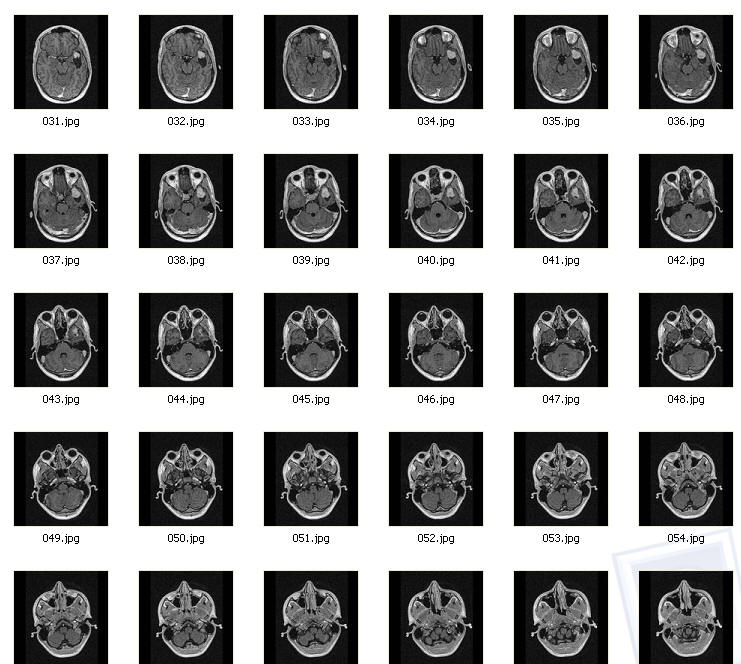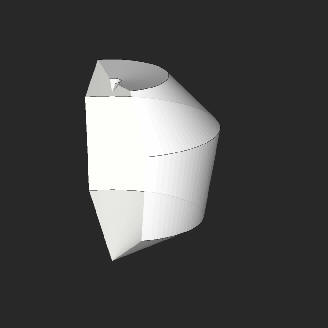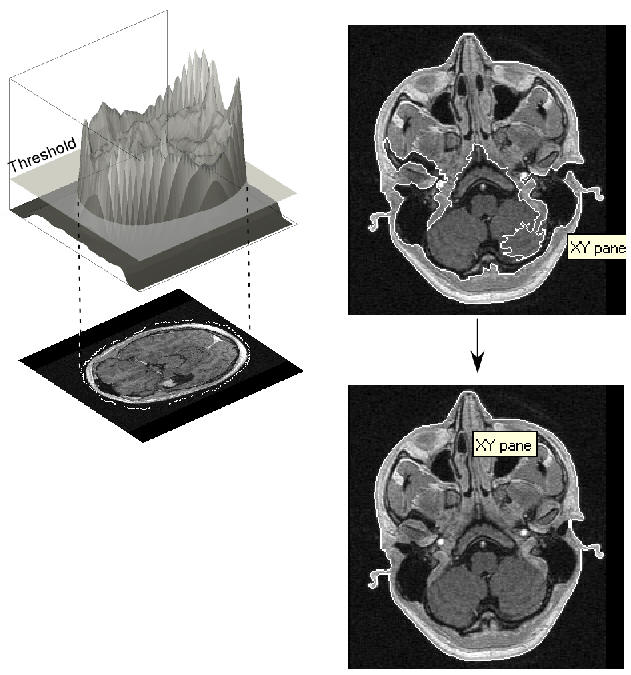

CT (Computer Tomography) or MRI (Magnetic Resonance Imaging) generates what is know as a "stack". This stack is a set of even of slices from a 3-dimensional object. A few from a CT scan can be seen below. To the right a graphic explanation of what the stack is.

This allows studying the above set of 2D images as a 3 dimensional one like below: (more 3D animations)


 To obtain the outer surface
of the object in a CT Scan or MRI, you need to find the outer contours to each
slice. Once all the contours are determined, surfaces will be generated between
contours as the paper in a Chinese lamp. If the contours are sufficiently near,
a
To obtain the outer surface
of the object in a CT Scan or MRI, you need to find the outer contours to each
slice. Once all the contours are determined, surfaces will be generated between
contours as the paper in a Chinese lamp. If the contours are sufficiently near,
a
fairly good resemblance to the real surface could be achieved.
Contouring is done by connecting contiguous pixels with the same luminance
value. This luminance we call it “Threshold” and can adjusted manually by the
user until the right surface is obtained.
One way to understand this contour is as the intersection of the plane z = Threshold
with mathematical surface that represents the luminance, on the z axis, as a
function of (x,y).
Contours can be generated individually or automatically. Contours will be generated by clicking on a pixel correction tool. The picture below shows how a is a contour generated and how the threshold chosen affect its automatic generation generation.
